Certain horse breeds are created to best handle their immediate local environment and the Kentucky Mountain Saddle horse breed is no different.
It was originally developed by farmers in Kentucky, but its outstanding temperament, sturdiness, and versatility have elevated the breed to one of the most sought-after in the market today.
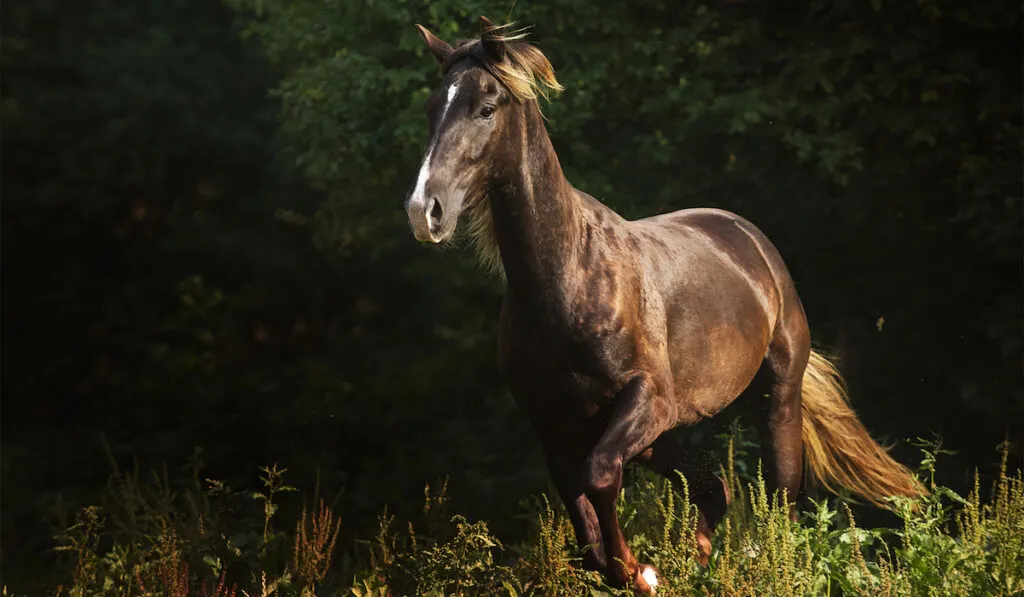
Table of Contents
The History of Kentucky Mountain Saddle Horse
As the name suggests, the Kentucky Mountain Saddle horse breed hails from the state of Kentucky in the United States.
Its exact origin is unknown, but people believe that the surefooted Narragansett pacer — developed in the 18th century in the eastern U.S. but now extinct — is a possible ancestor.
The breed is also related to and shares striking similarities with other breeds like the Rocky Mountain horse and Tennessee Walking horse, among other gaited horses.
Farmers in eastern Kentucky developed and have been breeding the Kentucky Mountain Saddle horse for more than a century.
Breeding this versatile horse breed was fueled by the demand for a small multipurpose horse that was powerful enough to help with farm work and comfortable to ride around in tough terrain for long periods.
The breeders also bred the horses to have docile temperaments to make them easier to handle by younger farm members.
It was, however, not until the 1980s that people started appreciating the dependability and versatility of the Kentucky Mountain Saddle horse.
Today, Kentucky Mountain Saddle horses are still considered excellent farm and trail horses.
Kentucky Mountain Saddle Horse Registry
The formation of the Kentucky Mountain Saddle Horse Association (KMSHA) in 1989 spearheaded the popularity of the Kentucky Mountain Saddle horse through registration.
However, crossbreeding produced Kentucky Mountain Saddle horse variants with pinto patterns and excess white markings.
This led to the foundation of the Spotted Mountain Horse Association (SMHA) in 2002 — a subsidiary of the Kentucky Mountain Saddle Horse Association.
The only difference between these two horse groups is purely color requirements.
It is important to note that the Kentucky Mountain Saddle Horse Association (KMSHA) studbook doesn’t accept horses from unknown or unregistered parents.
There is, however, an exception if a horse’s parents are registered with either the Kentucky Naturally Gaited Horse Association, Mountain Pleasure Horse Association, or Rocky Mountain Horse Association.
Geldings from fully unregistered parents are also accepted into the registry as long as they meet the breed’s standard.
The Spotted Mountain Horse Association (SMHA) studbook, however, doesn’t have this restriction.
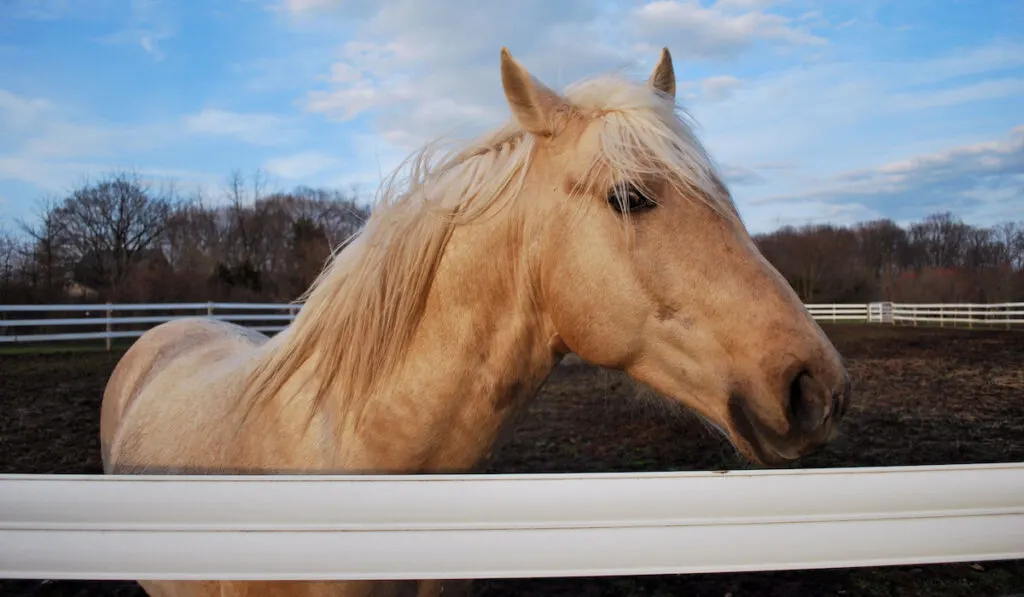
Characteristics of the Kentucky Mountain Saddle Horse
Kentucky Mountain Saddle Horse Conformation
Kentucky Mountain Saddle horses have a muscular and compact build that gives them their signature medium size.
Their arched mid-length necks rise above their sloped shoulders and deep chests. The facial profile of the breed is relatively flat.
Kentucky Mountain Saddle horses are generally independent and easy-going.
The horses must be gentle and have a willing temperament to be registered.
Kentucky Mountain Saddle Horse Size
Given the various horse groups within the larger Kentucky Mountain Saddle horse breed, it makes sense that the size of the horses varies greatly.
That being said, they typically stand between 11 and16 hands. The registry only registers mares and stallions that are 11 hands and above and classifies them into two categories:
- Class A–14.2 hands and above
- Class B–11 to 14.1 hands
As far as weight goes, Kentucky Mountain Saddle horses weigh between 950 and 1,200 pounds.
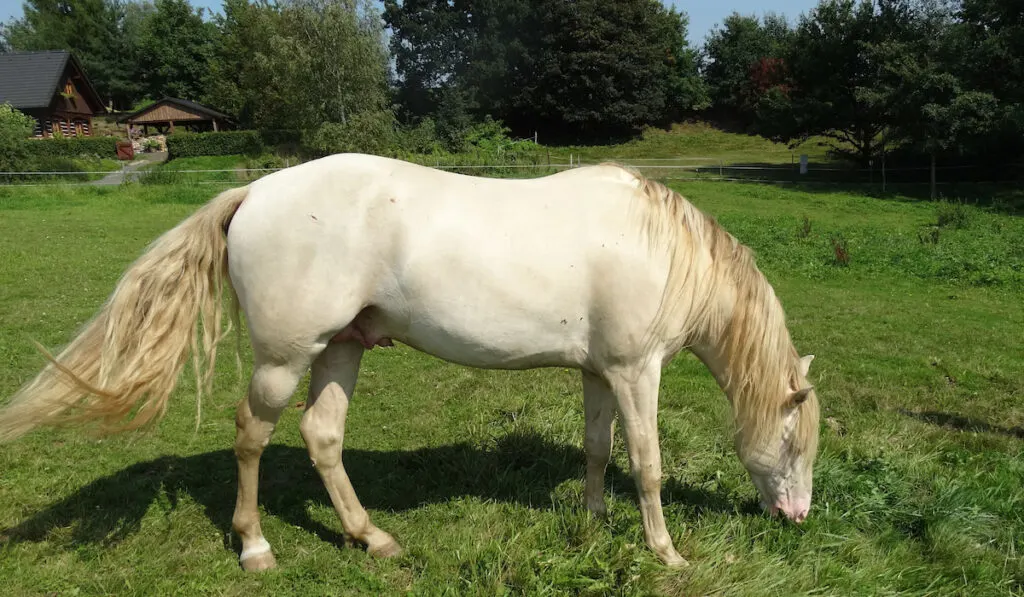
Kentucky Mountain Saddle Horse Colors
Like other horse breeds, Kentucky Mountain Saddle horses typically have solid colors, and a combination of colors and may also exhibit a variety of beautiful patterns.
Some of the colors you can expect to see include:
- Chestnut
- Gray
- Black
- Palomino
- Roan
- Dun
- Perlino
- Brown
- Cremello
- Buckskin
- Grullo
- Champagne
Kentucky Mountain Saddle horses may also present with white markings on their face, legs, and belly.
That being said, these white markings must not exceed 36 square inches of a horse’s body for it to be registered by the Kentucky Mountain Saddle Horse Association (KMSHA).
Consequently, horses with more white markings than these are considered Spotted Mountain horses and are registered by Spotted Mountain Horse Association (SMHA).
Kentucky Mountain Saddle horses also have flowy tails and manes that come in various colors creating contrasting coat-tail-mane combinations.
Kentucky Mountain Saddle Horse Temperament
Kentucky Mountain Saddle horses are famous for their gentle and friendly disposition.
As such, they are generally easy-going for children and novice riders to handle. They are also social creatures that love being around people.
This makes them great companions if you are looking for a horse to spend lots of time with.
Also since they are social animals, they do not startle easily, making them safe to ride. As earlier mentioned, the horses must exhibit gentleness and willingness to be accepted into the registry.
Kentucky Mountain Saddle Horse Lifespan
Like other horse breeds, Kentucky Mountain Saddle horses are hardy and long-lived. With proper care as far as nutrition, grooming, and health go, they can live for 25 to 40 years.
Kentucky Mountain Saddle Horse Uses
Do not let the name fool you. Kentucky Mountain Saddle horses will perform equally well hitched to a sleigh or at a competition.
Besides general farm work, the Kentucky Mountain Saddle horse is popular for performing a myriad of functions including driving, pleasure riding, and endurance in the modern day.
You can expect the horses to remain alert and calm while being reliable and agile when performing any of the above functions, thanks to their natural adaptation as a breed.
As earlier stated, the breed is still used for farm work and is also becoming quite popular for trail riding.
Kentucky Mountain Saddle Horse Gait
The breed’s four-beat gait has to be its most outstanding characteristic.
The Kentucky Mountain Saddle horse maintains a natural amble that is exceptionally steady, especially when going through rough terrain.
Since the horse always has at least a hoof on the ground at any time during the amble, you can rest assured that you will sit on the saddle almost motionless as your horse carries you at speed as it walks or canters.
This smooth ride makes the Kentucky Mountain Saddle horse ideal for riders with physical challenges or limitations.
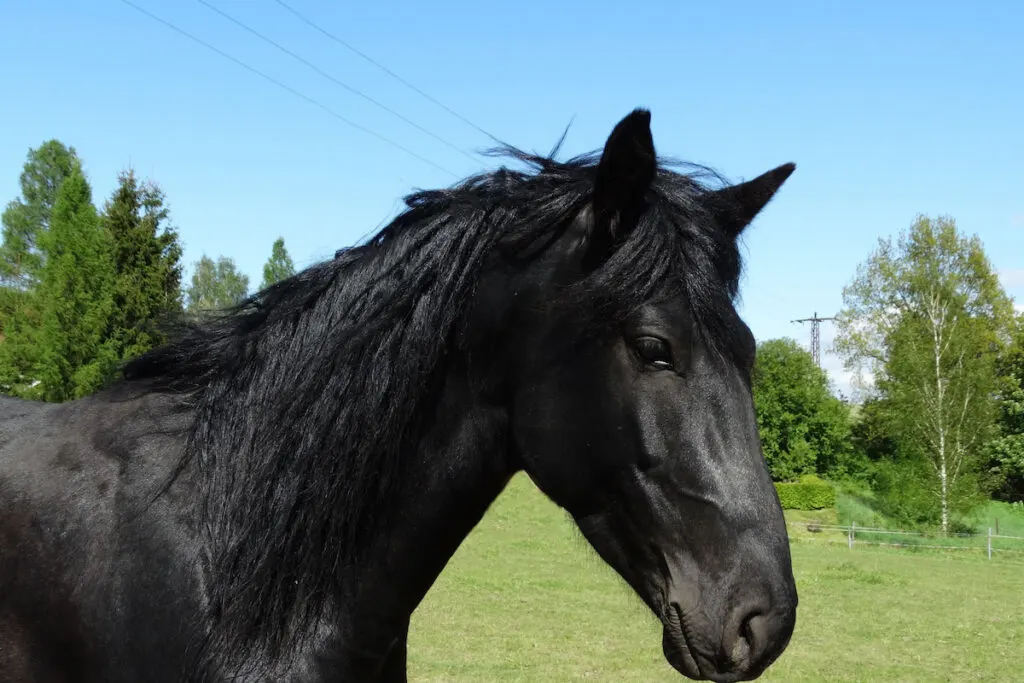
Caring for Kentucky Mountain Saddle Horses
Diet and Nutrition
Like other horses, Kentucky Mountain Saddle horses are happy to feed on high-quality hay, grass, vegetables, grain, and fruits.
As part of their care, your Kentucky Mountain Saddle horse may require mineral and vitamin supplements to provide extra nutrients especially if they graze freely.
Keep in mind that your horse may have a slightly lower nutritional requirement than a regular horse hence the need to keep an eye on their food intake, especially if they are unable to graze freely.
This is because they are not accustomed to grazing — farmers developed the breed in hilly environments where grazing was not feasible.
How much your horse requires, however, solely depends on their size and the discipline you use them for.
Grooming
Grooming your Kentucky Mountain Saddle horse shouldn’t be any different from grooming any other horse in your herd.
If anything, grooming sessions offer you golden opportunities to bond with your equine companions.
That being said, regular grooming tools like a body brush will help keep the coat shiny and healthy by evenly distributing natural oils.
A curry comb, on the other hand, is great for deep cleaning as it helps remove dirt, loose hair, and debris buried deeper in the coat.
A mane comb will keep the mane flowy and tangle-free, while a tail comb keeps the tail tangle-free too.
Regular shampooing and conditioning is a great way to keep your horse’s coat soft and shiny, especially if you consider showing your horse.
Using a hoof pick to clean your horse’s hooves after every ride will also help keep it in top shape.
Other horse grooming tools include:
| Tool | Function |
| Dandy brush | To remove the dirt surfaced by the curry comb |
| Finishing brush | To finish your grooming and help natural oils move along the animal coat |
| Face brush | To brush your horse’s face, it has extremely soft bristles |
| Shedding blade | Used for removing a horse’s winter coat |
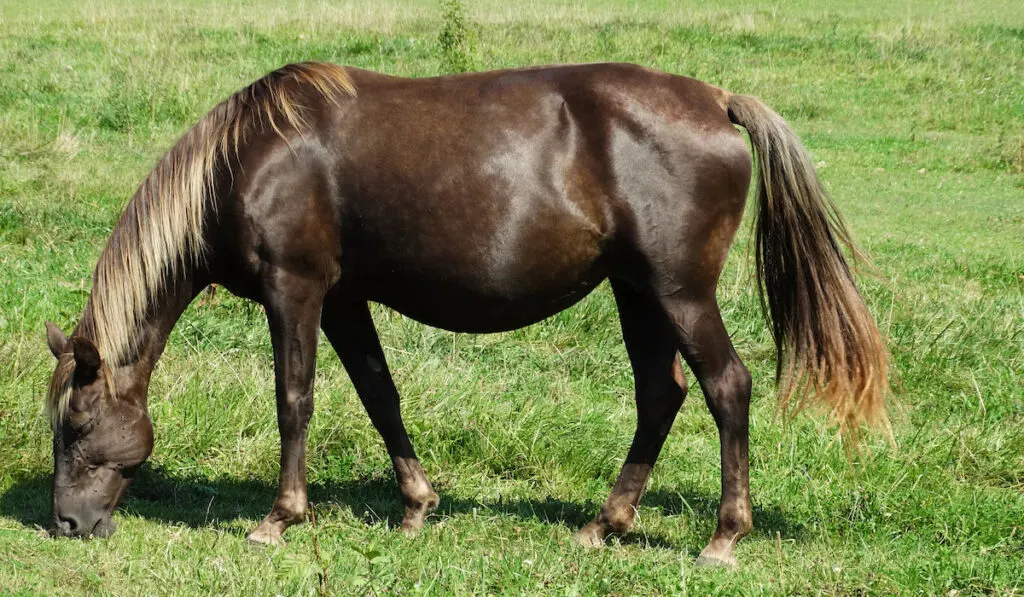
Kentucky Mountain Saddle Horse Common Health Issues
Kentucky Mountain Saddle horses are generally hardy and sturdy. As such, they are not prone to any health complications both acquired or genetic.
Regardless, regular check-ups and care are required to guarantee sound health.
Similarly, the horses are also not prone to behavioral issues as they were developed to have gentle, friendly, and easy-going temperaments.
Final Thoughts
If you are looking for a sturdy and hardy horse that has a lovable personality, the Kentucky Mountain Saddle horse is the equine for you.
The best part is that even with their highly sociable natures, Kentucky Mountain Saddle horses do not shy away from getting hard work done. Consider adding this remarkable horse breed to your herd!
Resources:
- https://www.horsebreedspictures.com/kentucky-mountain-saddle-horse.asp
- https://animals.mom.com/different-horse-brushes-functions-2607.html
- https://www.saddlebox.net/horse-brushes-explained/
- https://equusmagazine.com/horse-care/spring_shedding_tips_041510-8375/
- https://en.wikipedia.org/wiki/Kentucky_Mountain_Saddle_Horse
- https://www.petguide.com/breeds/horse/kentucky-mountain-saddle-horse/
- https://www.discoverthehorse.com/horses/kentuckymountainhorse
- https://horse-canada.com/breeds/kentucky-mountain-saddle-horse/
- https://imh.org/exhibits/past/breeds-of-the-world/north-america/kentucky-mountain-saddle-horse/
- https://www.thesprucepets.com/meet-the-kentucky-mountain-saddle-horse-1886133

